Speaker
Description
Bioaerosols are omnipresent within all ecosystems globally and have been shown to have serious impacts on human, animal, and plant health, with additional climatic affects noted. Thus, an understanding of the seasonal variation of bioaerosols such as pollen and fungal spores and the associated species with these categories is of great interest to the public, policy makers and academics alike. Hence, the use of online spectroscopic techniques have begun to be utilized in several locations around the world. As to allow for the determination of bioaerosols in near real-time.
In this study real-time fluorescence spectroscopy devices, the WIBS NEO (Wideband Integrated Bioaerosol Sensor) and IBAC-2 along with a traditional bioaerosol sampler (Hirst volumetric trap) were all run in tandem. This was undertaken at the TU Dublin Kevin Street sampling site (53°33’67” N, 06°26’79” W) at a height of 20 m) for a 6 week period in the summer of 2019 (07/08 to 16/09).
A Spearman correlation test was then used to calculate the degree and the significance between selected variables and fungal spores/pollen concentrations and WIBS/IBAC-2 sampled particles. The statistical analysis was performed using the packages nortest and corrplot in the software R (R Core Team, 2017)
The results obtained, and subsequent comparisons between the three devices and monitoring methods, show the ability of the WIBS NEO device is being used as a real-time bioaerosol sensor and its capabilities in discriminating between different pollen and fungal spores and non-fluorescent ambient particles. Good agreement for Total pollen and Alternaria spores (R2=0.8), Basidiospores (R2=0.66) and Ascospores (R2=0.93) were seen for comparisons between the Hirst and WIBS. However, the sensitivity of the WIBS-NEO also led to anthropogenic particles interfering with the determination and differentiation of PBAP, even at increased fluorescent thresholds.
The IBAC-2 did not exhibit a good correlation with ambient fungal spore concentrations, likely as a result of interferences by anthropogenic particles and rain droplets. High amounts of rainfall were shown to impact the sampling specificity of the IBAC-2, resulting in the recording of large particle counts that did not coincide with the other instruments.

